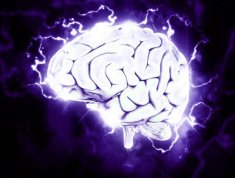“Migraine” derives from the Latin word hemicrania (or heMICRANia), meaning “half the skull.” As early as the second millennium B.C., migraine headaches have been categorized as different from other types of headaches by their peculiar qualities:
Typically unilateral, although a third can involve both sides of the head.
Preceded by the migraine aura in a fourth of patients—a visual, olfactory (smell), or other sensory illusion that precedes or accompanies a migraine, but may occur even without a subsequent headache.
Throbbing, increased with movement or exertion
Pain builds up over a few hours.
Lasts from a few hours to three days
Associated with nausea and vomiting
Hypersensitivity to bright lights and sound
Statistics on Migraine
According to the Migraine Research Foundation , migraines affect a billion people worldwide as the 3rd most prevalent human disease. Most common between the ages of 25-55, children can also get them. They ...
Epilepsy—When the Brain Goes Crazy but the Person with the Brain Isn’t
What is epilepsy? What say you, Erasmus?
In his 1818 edition of “Laws of Animal Causation,” Dr. Erasmus Darwin, grandfather of the more famous Charles Darwin, wrote, “The spirit of animation is the immediate cause of the contraction of animal fibres…resides in the brain and nerves, and is liable to general or partial diminution or accumulation.”
Well said, Erasmus.
But then he states, in “…the various kinds of epilepsy…a pain or disagreeable sensation is produced, frequently by worms, or the acidity in the bowels or by a diseased nerve in the side, or head, or by the pain of a diseased liver.”
Worms and liver pain notwithstanding (remember, this was state-of-the -art medicine in 1818), at least he nailed it with citing a “diseased nerve…in the head.”
Fast-forward from 1818 to 2017, how is epilepsy ...

